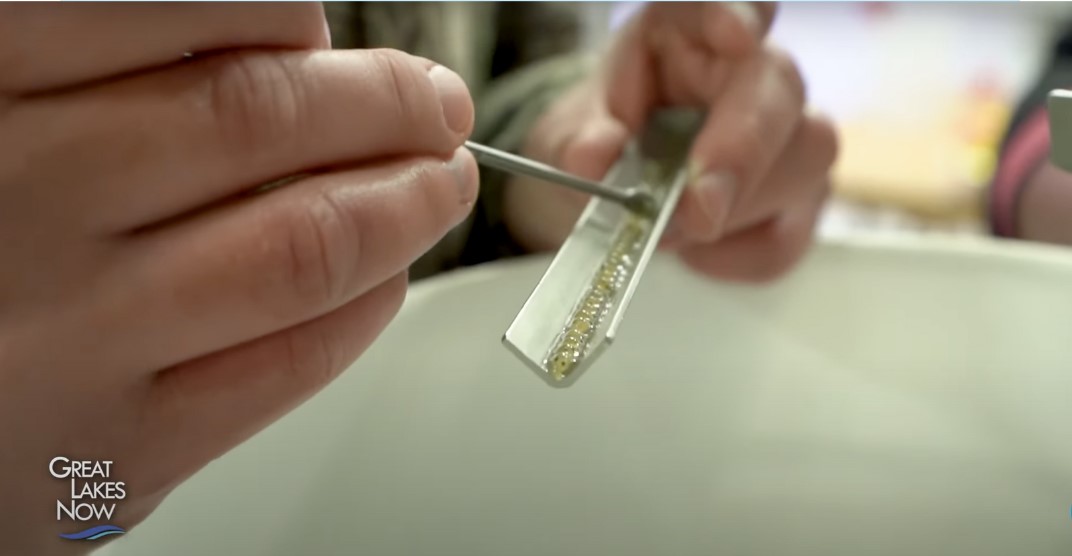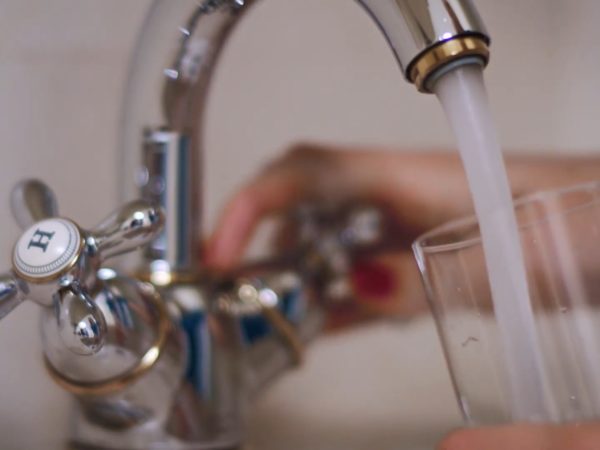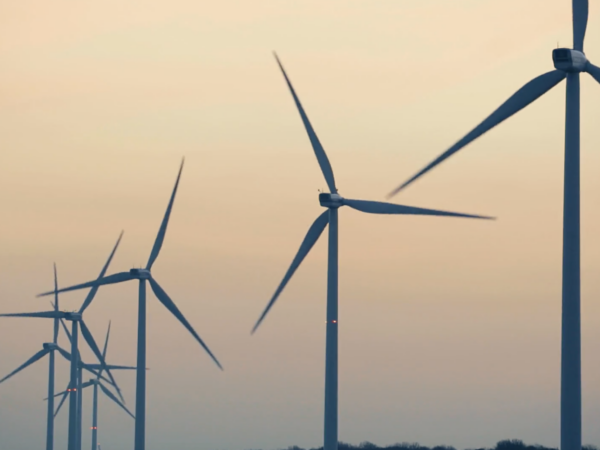
This lesson will explore the phenomenon of whitefish population decline in the Jordan River by Green Bay, Wisconsin. Whitefish are an important source of food and commerce in the Great Lakes, but for over a century the population has been in flux due to a number of factors ranging from human impact to invasive species and climate change. As students learn about aquaculture efforts to address the fluctuations in fish populations, they will model the impact of invasive species on the food web, engage in water quality testing, and simulate species competition.
- Know what aquaculture is and how it works
- Understand how invasive species affect the food web dynamics and can impact whitefish populations
- Be able to test water samples for various markers of water quality and ecosystem health
View the entire lesson plan including teacher background information, worksheets and more below or download for free here.
Activity 1:
This activity is a video discussion of a Great Lakes Now segment discussing how aquaculture is being used to help the whitefish population bounce back from decline in Great Lakes rivers. During the video they need to jot down four things they took away from the video using the 4 Notes Summary Protocol.
Watch a Great Lakes Now Segment
Activity 2:
As natural habitats degrade, invasive species disrupt food sources, and the culinary demand for fish impacts the naturally-occurring supply, the need for the fish-equivalent of cattle ranching, known as aquaculture, continues to increase. The so-called industry of fish farming has grown in recent decades, including in the Great Lakes, and is now being studied for its impact, costs, and benefits in the region. Students will read about an ongoing study into the aquaculture of the Great Lakes.
In this activity, students will use a Think Pair Square Protocol for discussing what they will read about this very topic.
Read About Fish Farming in the Great Lakes
Activity 3:
The purpose of this activity is for students to simulate and understand the competition for food resources between fish eggs and invasive species in an ecosystem.
Simulating Species Competition for Food
Activity 4:
The purpose of this activity is for students to explore the impact of invasive species on the food web dynamics crucial for whitefish survival in the Great Lakes ecosystem.
Investigating Food Web Dynamics
Activity 5:
The purpose of this activity is for students to assess water quality parameters that affect whitefish spawning and growth in different aquatic environments.
Testing Factors That Affect Water Quality
Activity 6:
Historically, the Detroit River was renowned for its abundant fisheries, including lake whitefish in the late 1800s. However, over-harvesting and habitat degradation, exacerbated by the construction of shipping channels like the Livingstone Channel, led to severe declines in the fish populations by the early 1900s. Students will read about the significance of lake whitefish in the Great Lakes region, particularly focusing on population changes in Lake Erie and the Detroit River.
In this activity, students will use a Think Pair Square Protocol for discussing what they will read about this very topic.
Read About Whitefish in the Detroit River
Learn all about Episode 2405: Saving Whitefish and Navigating Niagara on the landing page.
If you use this lesson or any of its activities with your learners, we’d love to hear about it! Contact us with any feedback or questions at: GreatLakesNow@DPTV.org




